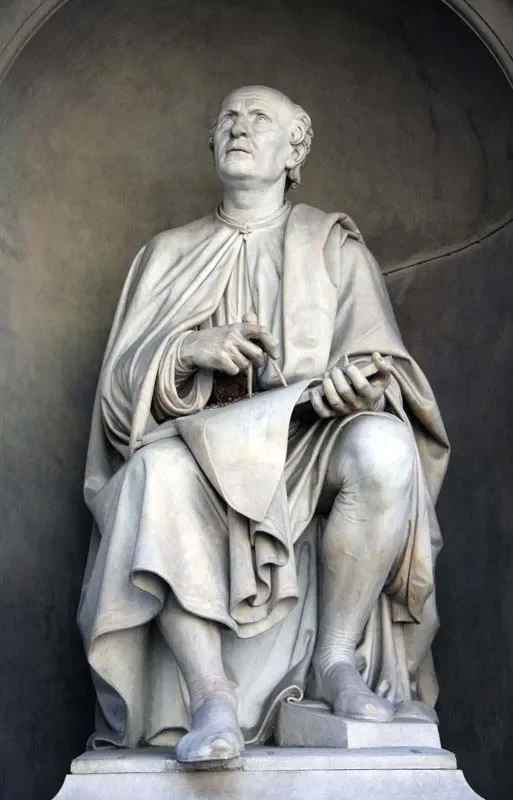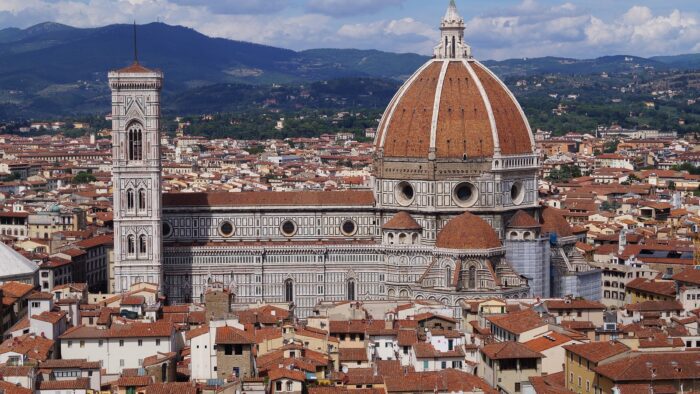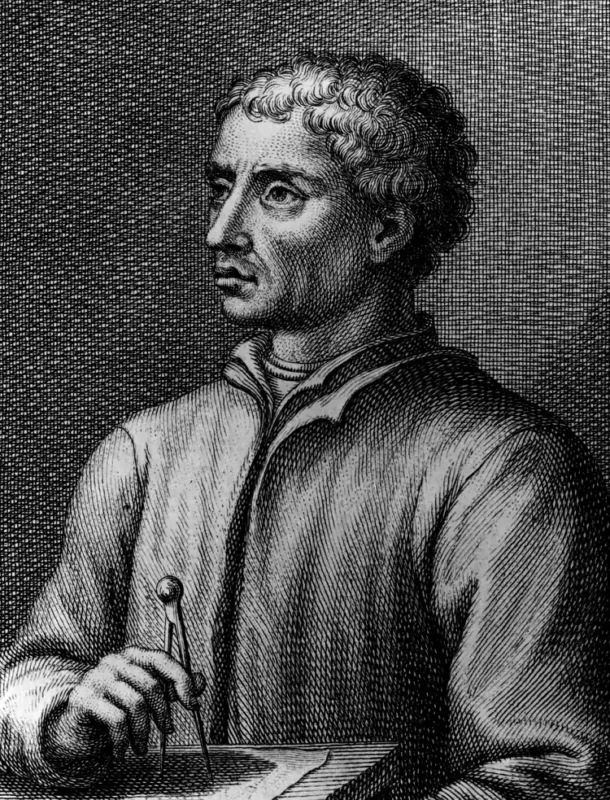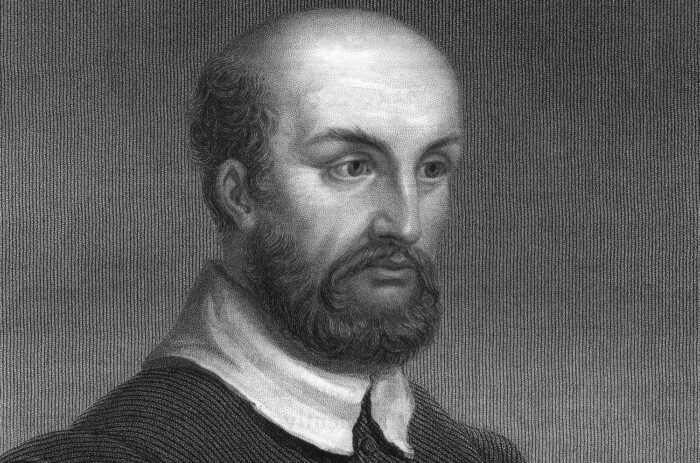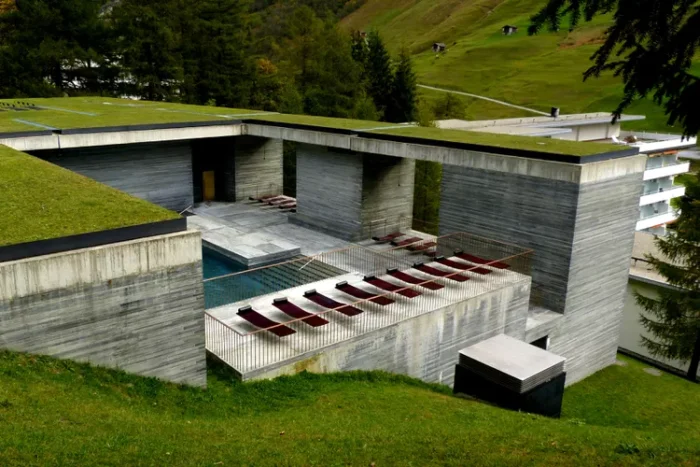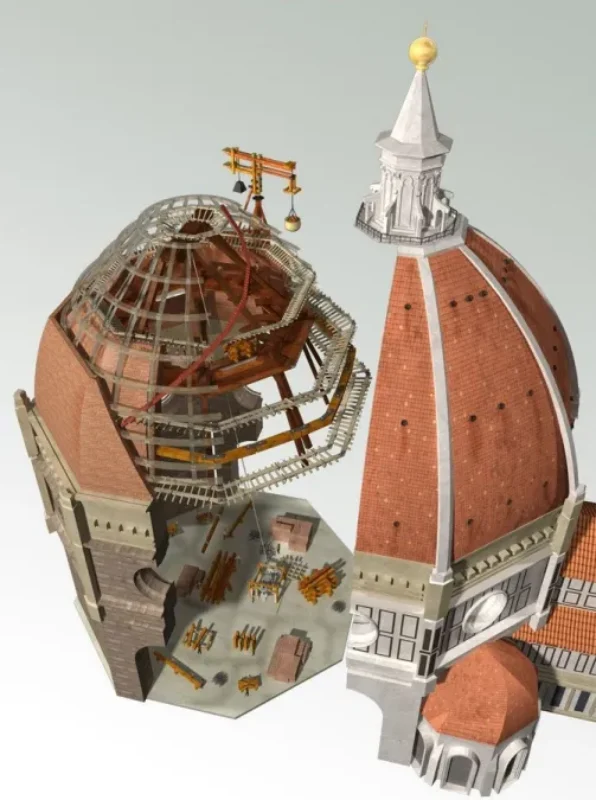Renaissance Architecture’s Living Legacy: Case Studies of Classical Principles in 21st Century Projects
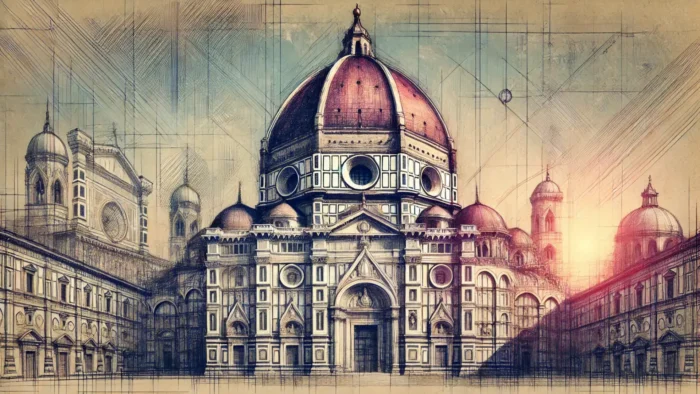
Explore Renaissance architecture’s enduring influence through the lens of three transformative masters whose innovations continue to shape contemporary design. While the beautiful intersection of art and architecture during the Renaissance fundamentally altered Western design sensibilities, it was Filippo Brunelleschi, Leon Battista Alberti, and Andrea Palladio who crafted the theoretical and practical foundations that continue to influence modern architecture today. Unlike the soaring verticality and mystical aspirations of Gothic architecture that preceded them, these Renaissance masters established a new architectural vocabulary rooted in classical antiquity yet revolutionary in its mathematical precision and humanistic philosophy.
Their collective legacy reads like a carefully curated exhibition of architectural evolution—each master building upon the discoveries of his predecessors while pushing the discipline toward unprecedented sophistication. From Brunelleschi’s engineering marvels to Alberti’s theoretical frameworks, and finally to Palladio’s systematic codification of classical principles, these architects didn’t merely design buildings; they redefined how we conceive of space, proportion, and the relationship between structure and society. This triumvirate’s influence extends far beyond their historical moment, continuing to inform contemporary design approaches in ways that would have astonished even these forward-thinking innovators.
What Are the Main Characteristics of Renaissance Architecture Through Its Masters?
The defining characteristics of Renaissance architecture emerged not as abstract principles but through the specific innovations of these three architectural giants. Brunelleschi pioneered the mathematical approach to linear perspective and proportion that became Renaissance architecture’s hallmark. His dome for Florence Cathedral demonstrated how classical Roman engineering could be adapted using innovative construction techniques, establishing precedent for the period’s emphasis on structural rationality combined with visual harmony.
Alberti’s treatise “De Re Aedificatoria” systematized these emerging characteristics into a comprehensive theory that emphasized symmetry, proportion, and the classical orders as fundamental organizing principles. His buildings exemplify the Renaissance commitment to facades that balanced mathematical precision with humanistic scale—notice how his Palazzo Rucellai in Florence employs a layered classical order system that creates visual rhythm while maintaining overall unity, a approach that prefigures today’s high fashion inspired by iconic architecture.
Palladio refined these characteristics into what became known as the Palladian style, characterized by temple-front porticos, symmetrical facades, and carefully calculated proportional relationships. His Villa Rotonda demonstrates how Renaissance masters achieved perfect centralized planning—a geometric purity that contemporary architects still reference when seeking to balance formal rigor with spatial flow. The characteristic Renaissance elements of rusticated ground floors, piano nobile with classical orders, and carefully proportioned window arrangements all reached their most refined expression through Palladio’s systematic approach.
Who Were the Most Famous Renaissance Architects and Their Revolutionary Contributions?
Filippo Brunelleschi (1377-1446) stands as the founding father of Renaissance architecture, though his path to architectural mastery began with a devastating professional rejection. After losing the competition for the Florence Baptistery doors to Lorenzo Ghiberti in 1401, Brunelleschi traveled to Rome where he conducted the first systematic archaeological study of ancient Roman ruins. This methodical approach to understanding classical precedent became a hallmark of Renaissance architectural practice.
His masterpiece, the dome of Florence Cathedral, solved an engineering problem that had stymied builders for over a century. Brunelleschi’s innovative double-shell construction, utilizing a herringbone brick pattern and incorporating iron tension rings, created a self-supporting structure that required no temporary wooden framework—a revolutionary departure from medieval building practices. More significantly, his mathematical approach to design, including his development of linear perspective, established architecture as a discipline grounded in scientific method rather than medieval guild tradition. His Pazzi Chapel demonstrates how he translated Roman spatial concepts into intimate human scale, creating architecture that felt both monumentally significant and psychologically comfortable.
Leon Battista Alberti (1404-1472) transformed architecture from craft to intellectual discipline through his theoretical writings and built works. Unlike Brunelleschi, who was primarily a practitioner, Alberti approached architecture as a humanist scholar, synthesizing classical sources with contemporary needs. His “De Re Aedificatoria,” the first printed book on architecture, established theoretical frameworks that architects still reference today.
Alberti’s built works demonstrate how theory translates into innovative practice. His facade for Santa Maria Novella in Florence solved the problem of adapting classical proportions to existing medieval structures, creating a geometric pattern based on musical harmonies that became a template for Renaissance church design. His Palazzo Rucellai introduced the systematic use of classical orders on domestic architecture, while his San Andrea in Mantua pioneered the use of a single massive barrel vault that influenced church design for centuries. Alberti’s integration of classical vocabulary with contemporary building types—creating new solutions for palaces, churches, and urban planning—established precedents that continue to inform architectural building materials selection and design approaches.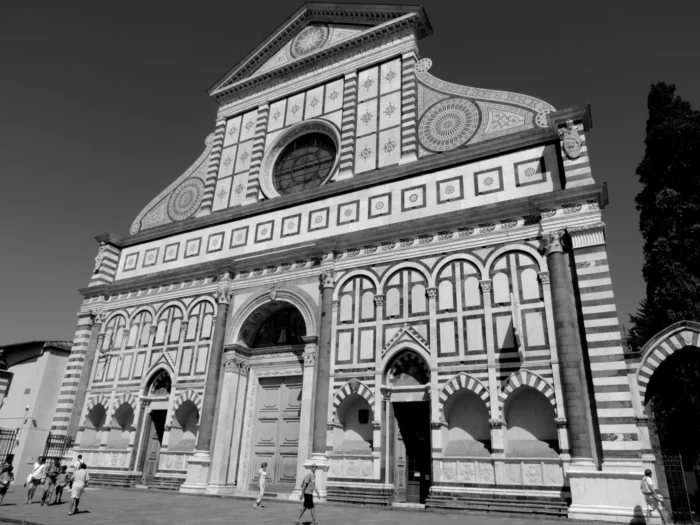
Andrea Palladio (1508-1580) represents the culmination of Renaissance architectural thinking, systematizing the innovations of his predecessors into a coherent design philosophy that became globally influential. Born Andrea di Pietro della Gondola, he adopted the name Palladio after the Roman writer Palladius, signaling his commitment to classical principles. His four books on architecture, “I Quattro Libri dell’Architettura,” became the most influential architectural treatise ever published, spreading Palladian principles across Europe and ultimately to America.
Palladio’s villa designs revolutionized domestic architecture by applying temple forms to residential buildings. His Villa Rotonda, with its perfect centralized plan and four identical temple fronts, demonstrates how classical principles could create entirely new building types. His Basilica in Vicenza solved the problem of regularizing an irregular medieval structure through his innovative use of the “Palladian motif”—an arched opening flanked by rectangular openings, supported by columns. This solution, later known as the Venetian window, became a staple of classical architecture worldwide. Palladio’s church designs, particularly San Giorgio Maggiore in Venice, resolved the Renaissance challenge of applying classical temple fronts to basilican church plans through his ingenious overlapping pediment system.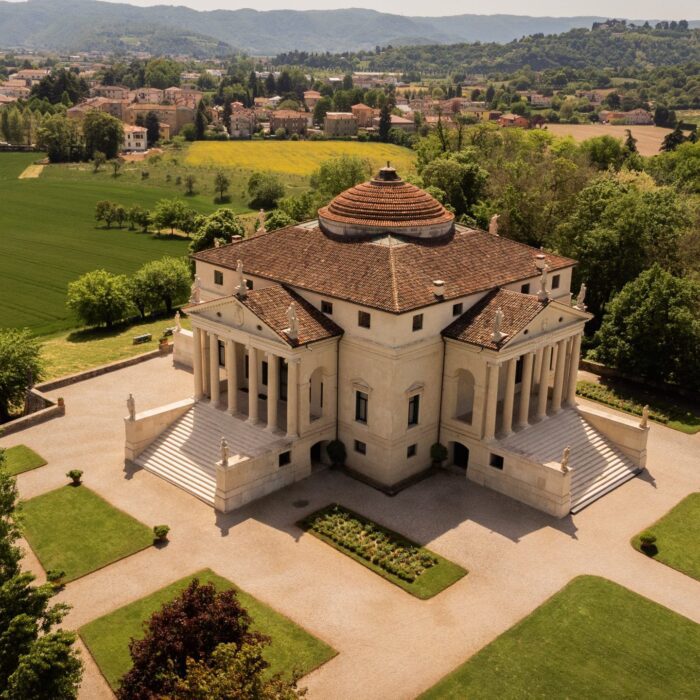
How Did Renaissance Architecture Influence Modern Design Innovation?
The influence of Renaissance masters on contemporary architecture operates on multiple levels, from fundamental design principles to specific formal strategies. Brunelleschi’s mathematical approach to proportion continues to inform architectural education and practice—his method of using geometric relationships to determine building dimensions appears in contemporary projects from Tadao Ando’s concrete compositions to Norman Foster’s high-tech structures. The Renaissance emphasis on systematic analysis of classical precedent established the methodology that architects still use when studying historical references for contemporary adaptation.
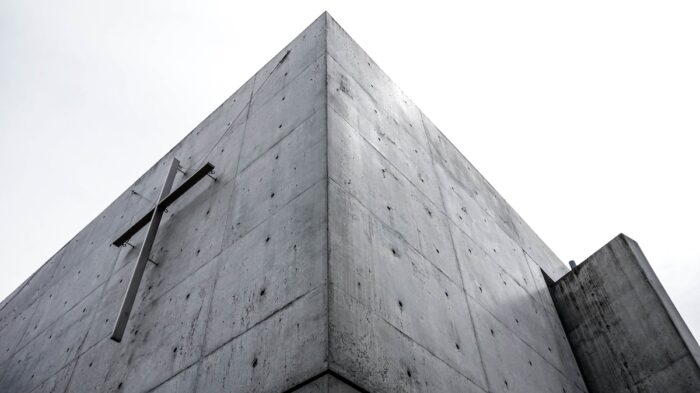
The Church of Light in Ibaraki, Osaka, Japan (Photo: Stock Photos from chisanupong Boss/Shutterstock)
Modern classical architecture draws directly from Alberti’s theoretical framework, particularly his concept of beauty arising from the harmony of all parts in relation to one another. This principle underlies much of contemporary institutional architecture, where architects must balance monumental presence with human accessibility. Robert Stern’s residential projects demonstrate how Alberti’s proportional systems can be adapted to contemporary residential needs, while David Chipperfield’s museum designs show how Renaissance spatial concepts translate to modern cultural buildings.
Palladio’s influence on modern design extends beyond stylistic quotation to fundamental organizational principles. His villa plans, with their clear separation of public and private spaces arranged around central halls, inform contemporary residential design from Richard Meier’s geometric compositions to Peter Zumthor’s more tactile approaches. The Palladian principle of adapting classical elements to specific programmatic needs—rather than applying them decoratively—continues to guide architects who work with historical precedent while meeting contemporary sustainable products and materials requirements.
Contemporary parametric design tools have revealed new aspects of Renaissance proportional systems, allowing architects to analyze and adapt classical relationships with unprecedented precision. The Renaissance masters’ integration of theoretical knowledge with practical innovation provides a model for how contemporary architects might balance digital tools with humanistic concerns, creating architecture that serves both functional needs and cultural aspirations.
Materials and Methods: How Renaissance Masters Transformed Construction
The Renaissance masters revolutionized not just architectural aesthetics but also construction methodology, establishing approaches to materials and building techniques that continue to influence contemporary practice. Brunelleschi’s innovations in structural engineering demonstrated how traditional materials could be used in entirely new ways through systematic analysis and mathematical calculation.
His dome construction utilized locally available materials—brick, stone, and iron—but arranged them according to Roman precedent adapted through innovative technique. The double-shell structure reduced dead load while the herringbone brick pattern distributed stress more efficiently than conventional masonry. This marriage of classical precedent with engineering innovation established a Renaissance approach that prioritized both structural performance and visual impact—an integration that contemporary architects still strive to achieve.
Alberti’s theoretical approach to materials emphasized their expressive potential beyond mere structural function. His facade designs demonstrate how the same materials—stone, brick, and marble—could create entirely different architectural effects through careful attention to proportion, surface treatment, and detail resolution. His use of rusticated stone at the Palazzo Rucellai’s ground level versus the smooth pilasters above shows how material treatment could reinforce architectural hierarchy, a strategy visible in contemporary projects that use material changes to articulate different functional zones.
Palladio systematized material usage according to both practical and aesthetic criteria. His treatise includes detailed specifications for material selection based on availability, durability, and appropriateness to specific building types. His innovative use of brick construction with stone details maximized economy while maintaining visual richness, demonstrating how material constraints could drive design innovation rather than limit it. This approach parallels contemporary sustainable design strategies that seek maximum effect from minimal resource investment.
The Renaissance masters’ documentation of their material innovations through treatises and drawings established precedent for the systematic sharing of technical knowledge that characterizes modern architectural practice. Their empirical approach to testing new construction methods while respecting traditional craft knowledge provides a model for how contemporary architects might integrate digital fabrication techniques with time-tested building wisdom.
The architectural revolution initiated by Brunelleschi, Alberti, and Palladio extends far beyond their historical moment, continuing to shape how we conceive of space, proportion, and the relationship between theoretical knowledge and built reality. Their collective legacy demonstrates that architectural innovation emerges not from rejecting the past but from understanding it deeply enough to transform it for contemporary needs. As we face current challenges in sustainable design, urban density, and cultural continuity, these Renaissance masters remind us that lasting architectural solutions emerge from the synthesis of rigorous analysis, innovative technique, and humanistic vision.
Their influence permeates contemporary practice in ways both obvious and subtle—from the classical proportions that still govern institutional architecture to the systematic methodology that characterizes modern design process. In an era of rapid technological change, the Renaissance masters’ example suggests that the most enduring architectural innovations combine respect for precedent with willingness to experiment, creating buildings that serve immediate needs while contributing to architecture’s ongoing evolution. Their legacy lives not in stylistic imitation but in their demonstration that architectural excellence emerges from the marriage of intellectual rigor, technical mastery, and deep commitment to improving human experience through thoughtfully designed space.
The post Renaissance Architecture’s Living Legacy: Case Studies of Classical Principles in 21st Century Projects appeared first on Arch2O.com.

